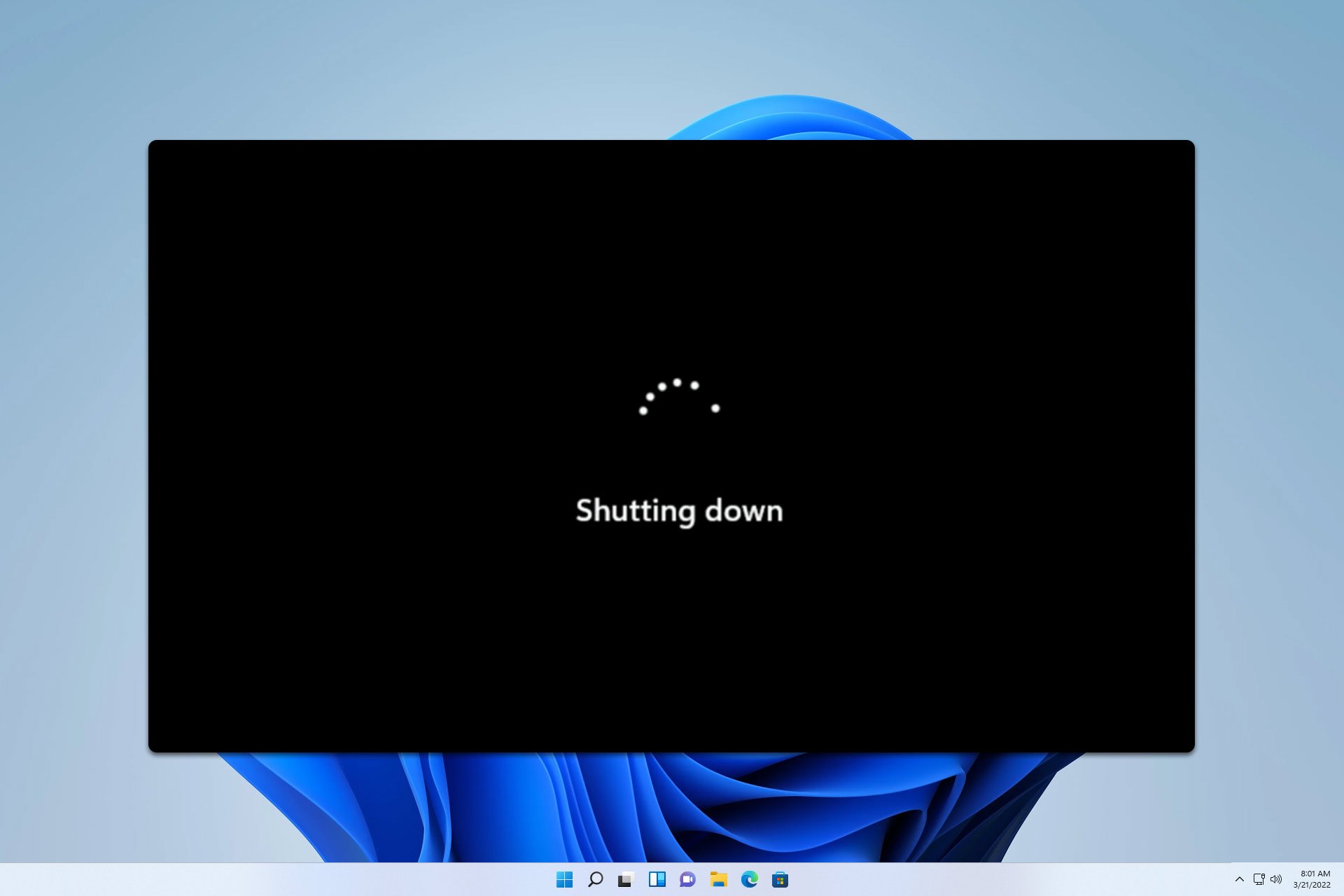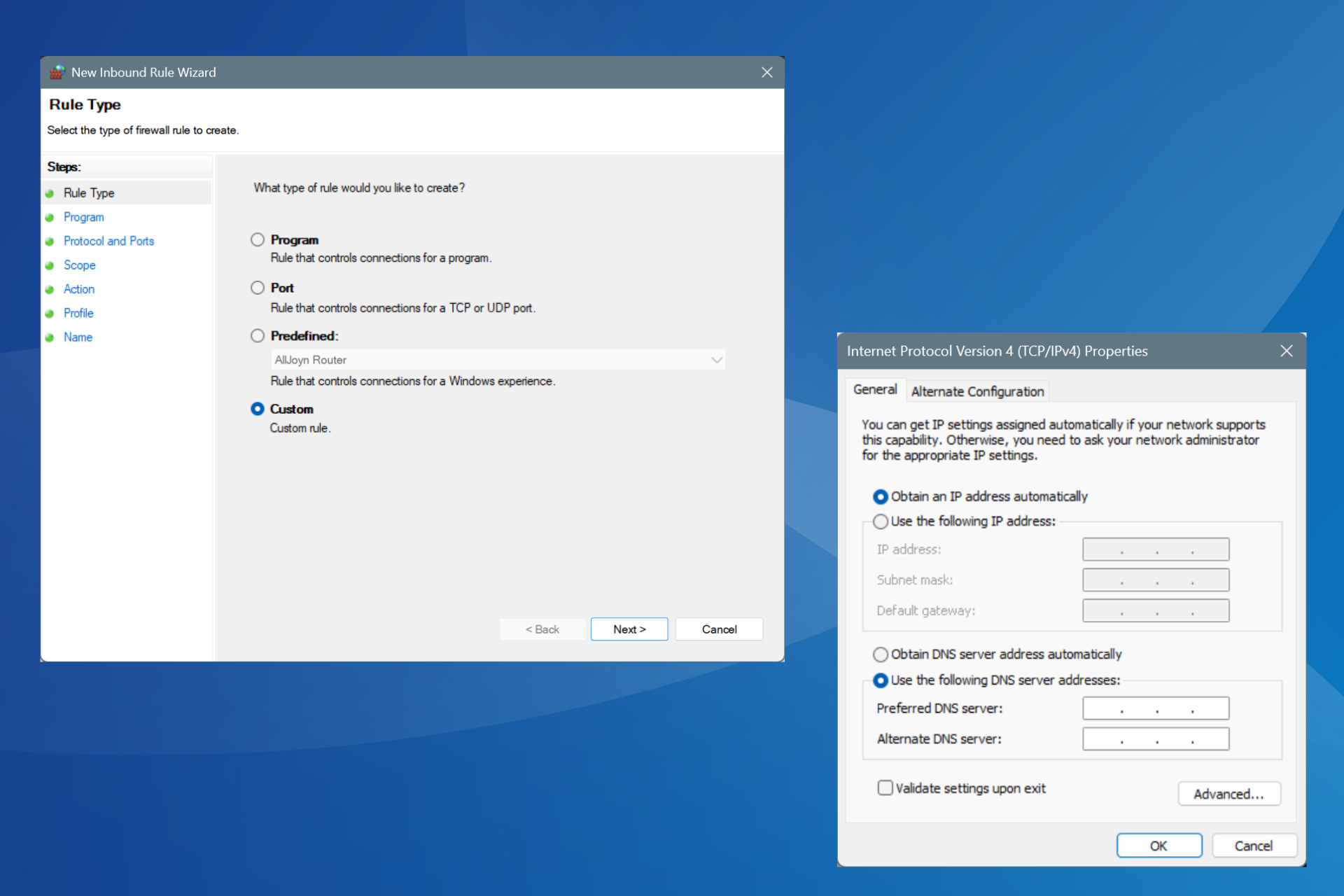How to Fix ERROR_SYSTEM_POWERSTATE_TRANSITION
First, check the Event Viewer to look for warnings related power transition
6 min. read
Published on
Read our disclosure page to find out how can you help Windows Report sustain the editorial team. Read more

The ERROR_SYSTEM_POWERSTATE_TRANSITION with error code 782 (0x30E) and description 782 (0x30E) The system power state is transitioning from %2 to %3 appears when your computer is trying to change its power mode from sleeping, waking up, or shutting down. This error indicates that your PC is facing problems in changing power states.
How can I fix ERROR_SYSTEM_POWERSTATE_TRANSITION?
Before moving to the advanced steps, make sure you perform these basic ones:
- Open the Event Viewer (press Windows + X and select Event Viewer), navigate to Windows Logs>System, and check for the error code and warning related to power transitions
- Check all the hardware connections to ensure everything is connected correctly and there is no damage
- Run a full system scan using a reliable antivirus tool
- Ensure the BIOS firmware is up to date
1. Update device drivers
- Press Windows + R to open the Run window.
- Type devmgmt.msc and click OK to open the Device Manager app.
- Expand each system component category one by one, and check for any devices with a yellow triangle with an exclamation mark.
- Right-click the driver and select Update driver from the context menu.
- Click Search automatically for drivers.
Windows will try to find the most suitable version for your device; however, if it fails, you can head to the device’s manufacturer’s website and download the latest version of the driver. Alternatively, you can also opt for a reliable third-party driver updater tool to ensure all the drivers on your PC are up to date.
2. Check the power settings
- Press the Windows key, type control panel in the search box, and click Open from the list of options to launch Control Panel.
- Select Large icons for View by and click Power Options.
- Click Change plan settings.
- Select Change advanced power settings.
- On the Power Options window, check the power settings for Hard Disk, Sleep, and Hibernate to ensure they are correctly configured.
- If you don’t know what settings to use, click Restore plan defaults, then click Apply and OK to save the changes.
3. Disable Fast Startup
- Press the Windows key, type control panel in the search box, and click Open from the list of options to launch Control Panel.
- Select Large icons for View by and click Power Options.
- Click Choose what the power buttons do.
- Select Change settings that are currently unavailable.
- Under the Shutdown settings, remove the checkmark next to Turn on fast startup (recommended).
- Click Save changes to confirm the action.
Now restart your computer and check if you still see the ERROR_SYSTEM_POWERSTATE_TRANSITION. If you still get the error, reverse engineer the steps to enable Fast Startup.
4. Run the System File Checker tool
- Press the Windows key, type cmd in the search box, and click Run as administrator from the list of options to launch Command Prompt with administrative rights.
- To scan and repair the corrupted system files, copy & paste the following command and hit Enter:
sfc /scannow - The tool will find and repair the missing system files. Once the scan is complete, restart your computer to let the changes take effect.
5. Restore your PC to an older version
- Press Windows + R to open the Run window.
- Type sysdm.cpl and click OK to open the System Properties window.
- Go to System Protection tab, and click System Restore.
- Select Choose a different restore point on the System Restore wizard and click Next.
- Select the restore point created before the ERROR_SYSTEM_POWERSTATE_TRANSITION appeared and click Next.
- Click Finish.
Windows will restart and try to restore your system settings to the selected point. However, if you see the System Restore did not Complete Successfully message after the restart, the reasons could be conflicting drivers or missing system files; read this guide to learn more.
6. Reinstall Windows (Last resort)
 NOTE
NOTE
1. Back up your essential data, including videos, photos, documents, and other files
2. Keep your Microsoft account credentials handy
3. Make a list of third-party apps, their licenses, and credentials
4. Get a USB flash drive with 8 GB of free space
5. Keep your laptop on charge
Create an installation media
- Go to the Windows 11 download website on another PC or your affected PC, if it is working.
- Locate Create Windows 11 Installation media and click Download now.
- Double-click the mediacreation.exe file to run it, and click Yes on the UAC prompt.
- On the Windows 11 Setup wizard, click Accept.
- Choose the language, edition, and architecture, and click Next to proceed.
- Plug in your USB drive. On the Choose which media to use screen, select the USB flash device option and click Next.
- On the Select a USB flash drive page, make sure the flash drive letter you plugged in appears. If it doesn’t, click Refresh drive list, ensure the flash drive is listed, and click Next.
- Wait for the USB device to get ready, then click Finish, and safely remove the USB device from the PC.
Reinstall Windows
- Plug the USB flash drive into the affected computer, then restart it.
- Your PC will boot to the USB drive; however, if doesn’t, you might have to change the boot order from the boot menu.
- Once it boots using the flash drive, you will get the Install Windows page.
- Choose your language, time, and keyboard preferences, and click Next.
- Click Install Windows to start the process.
During the installation process, your PC may restart several times, and the process could take up to 30 minutes to one hour, depending on the system speed. Once complete, Windows will boot up and take you to the login screen. You can now log in to your account, check for Windows Updates, and configure your device according to your preferences.
If the device boots to the USB drive after installation, reverse engineer the steps you followed to change the boot order.
In conclusion, to fix the ERROR_SYSTEM_POWERSTATE_TRANSITION, you can update the device drivers, scan & repair the system files, check the power plan settings, disable fast startup, or restore your PC to an older version.
However, if none of these work, you can reinstall Windows to fix this BSoD error once and for all. Reinstalling Windows can also help you fix other blue screen errors like ERROR_BAD_STACK 543 (0x21F) and ERROR_INTERMIXED_KERNEL_EA_OPERATION 324 (0x144)
If you have questions or suggestions about this error, feel free to mention them in the comments section below.






























User forum
0 messages